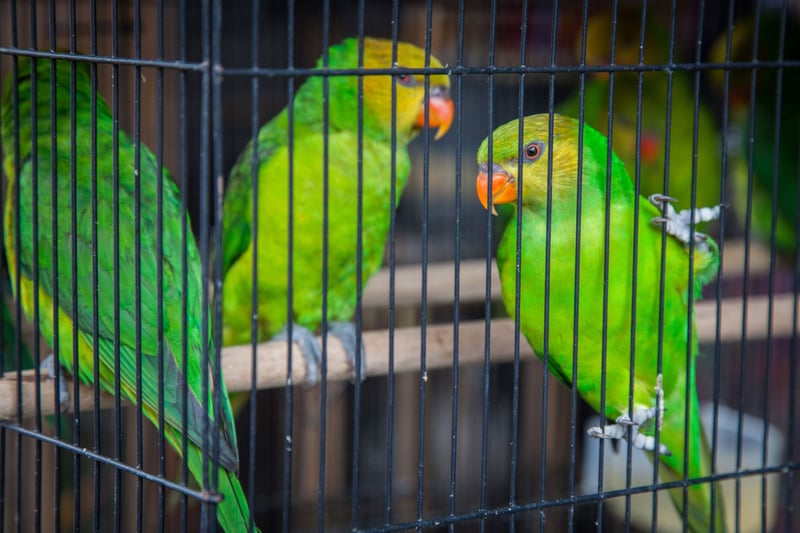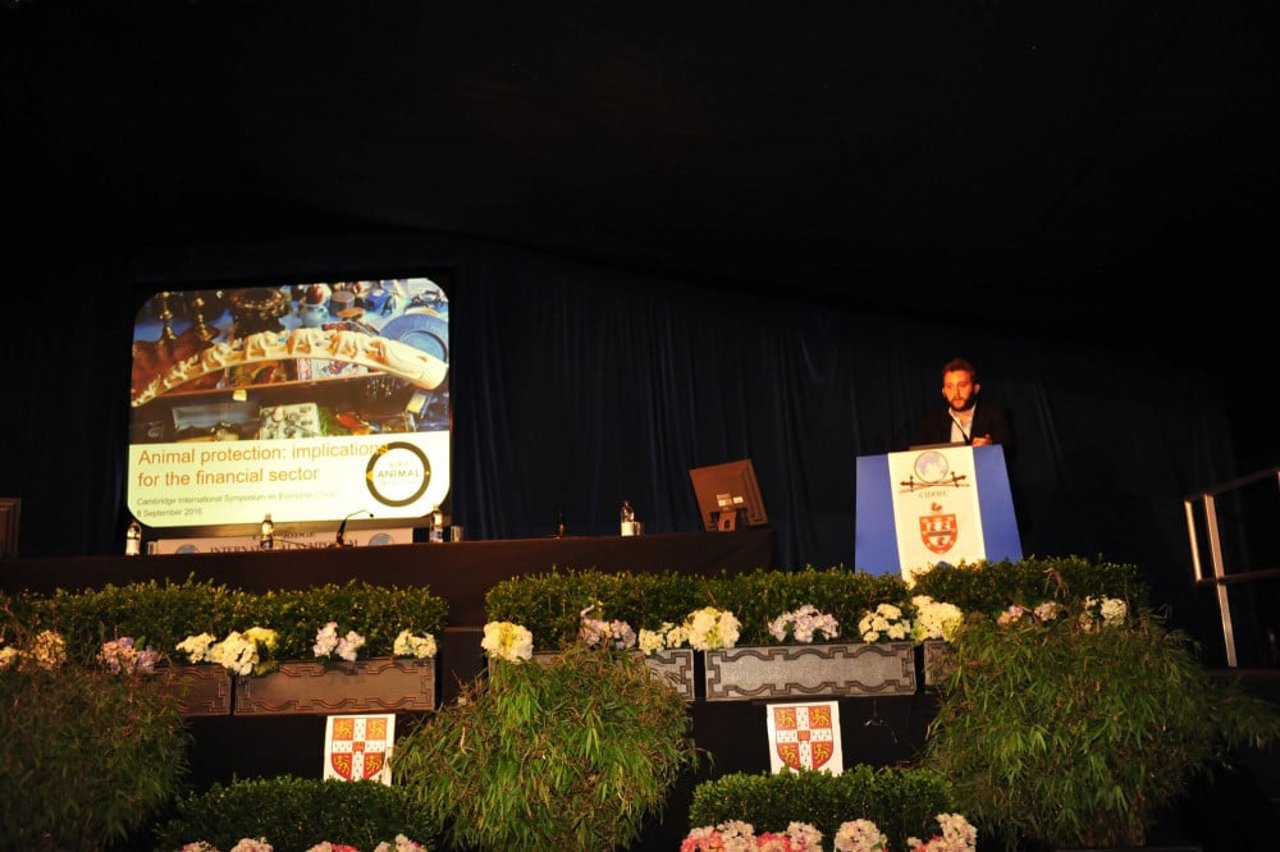
We presented ‘The implications of animal protection for the financial sector’ at one of the largest global gatherings of enforcement, government, legal and financial professionals
The event gave us the chance to build on relationships with organisations and professionals that can ultimately help us tackle animal welfare issues such as wildlife trafficking, through improved communication.
Information between public, private and third sectors is not often openly shared, which can be an obstacle to solving global animal welfare issues. We believe inter-sectoral partnerships and relationships can help to break these obstacles down.
Our role at the 34th Cambridge International Symposium on Economic Crime was to ensure focus on the collaboration needed to protect animals. Over 1,300 attended, including professionals from the financial, legal, governmental, inter-governmental and academic sectors.
A variety of specialists came to our workshop, including U.S. attorneys fighting environmental or human trafficking cases, and delegates from the United Nations, International Bar Association, Malaysia’s central bank and the Association of Certified Anti-Money Laundering Specialists.
Those who control transnational wildlife trafficking rely on legal channels to launder their illegal profits, using the formal financial sector and front companies. We introduced this problem to our participants, and focused on so-called “non-charismatic” species - including Indian Star tortoises, Malayan pangolins, and African Grey parrots (thank you to LAGA, the Last Great Ape Organisation, for providing information in support of this presentation).
This was a revelation to some attendees, as such species are often forgotten in the public conversation which is usually dominated by elephant ivory and rhino horn.
We were supported in our presentation panel by a representative from RUSI, a globally respected think tank that advises governments on defence and security. We collaborated with RUSI on the report, “An Illusion of Complicity: Terrorism and the Illegal Ivory Trade in East Africa”.
We presented evidence from our investigations, showing that organised criminal groups:
- Move low-profile species at relatively low risk with high profit margins. From the seizures that do occur (the majority of illegal shipments go undetected) an insight is given into how lucrative the trade is. Take our Indian Star tortoise investigation, in which one tortoise is worth USD $1 when first captured, and then USD $260 when sold at market. This is a significant price mark-up, particularly given consignments of 200 tortoises are smuggled out of one area every month for six months of the year.
- Compartmentalise activity to protect their high-level command structure. Each part of a specific trade route is broken into drop-off and pick-up points, with different traffickers moving wildlife from one location to another. This was demonstrated in this pangolin seizure; when apprehended, expendable low-level traffickers could not lead enforcement to their superiors as they never meet them.
- Utilise transport companies to move wildlife illicitly and simultaneously via different routes. Either a shipment will be moved from origin to transit by one method (i.e. air) and then from transit to end destination by another (i.e. sea), or they will use both at the same time, with the first being the ‘main’ route and the second a ‘back-up’ in case it is discovered.
- Exploit a complex legislative environment in multiple countries. A syndicate may take animals from the wild in one country where it is illegal to do so and traffic them to a second country where it may be legal to sell this animal if captive-bred. The syndicate avoids being targeted by agencies concerned with wild-caught illegal and international trade, as their stock appears legal, domestic and captive-bred.
- Encourage bribery and corruption to enable wildlife smuggling. The routes and methods used to move wildlife depends on the strength of criminal connections in government and business. Smuggling has been facilitated by customs and enforcement agents, and transport and commercial company staff. Permits regulating the legal wildlife trade can be falsified to enable the laundering of wildlife taken out of the wild illegally.
Eco-crime: a multi-billion-pound industry
United Nations Environment Programme (UNEP) and the International Criminal Police Organization (INTERPOL) recently valued ‘eco-crime’ at $91-258 billion in 2016. And the European Union is a hub for trafficking in transit and a major market for illegal wildlife products.
The United Nations Office on Drugs and Crime is increasingly urging UN member states to apply provisions that address money laundering to wildlife crimes, making them easier to prosecute. The European Commission also acknowledges the link between wildlife and financial crime and has pledged EUR700 million for five years to anti-money laundering and similar efforts.
As wildlife traffickers need to launder profits and move contraband, the financial sector is well positioned to stop them from doing so given its visibility over the supply chain. But they have to take such crimes seriously.
Large banks could suspend major corporate customers such as cargo companies, if complicit in illegally smuggling wildlife. They could also send out watch lists for so-called wildlife ‘kingpins’ to report suspicious financial transactions.
Sharing intelligence and working together
We are giving intelligence to the wider law enforcement community and providing our experience to stakeholders such as the National Crime Agency. The event gave us a chance to further build such partnerships in the global financial sector, particularly targeting financial intelligence units, which is a really exciting step for us.
This approach can go beyond just wildlife – to encompass animal protection issues with illegal and financial aspects, such as the fraudulent movement of livestock with no welfare provision; and contracts corruptly given for unnecessary animal culling.
We look forward to presenting the success of such partnerships to protect animals at next year’s Symposium.
Find out about our work with enforcement agencies to stop the illegal wildlife trade.
